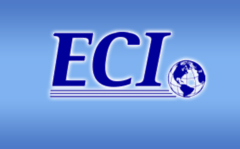Case study: Optimisation of a Stabilised Large Scale ATF Perfusion Process
Abstract
Mammalian cell cultures are used to produce a range of recombinant therapeutic proteins where post-translational modifications, such as glycosylation, are of key importance. The demand for proteins expressed in mammalian cells has increased rapidly over the last decade, primarily driven by the success of monoclonal antibodies (mAbs) that are required at large doses for therapeutic use. Several host cell lines are employed for manufacturing (e.g. NS0, hybridomas, PER.C6, BHK, etc.) but the primary workhorses are Chinese Hamster Ovary (CHO)-derived cell lines accounting for over 70% of the recombinant therapeutics. CHO cells have a proven track record as a safe host for production of biopharmaceuticals with product glycosylation patterns compatible with the human immune system. Perfusion process with CHO cells is often used for fragile proteins production and rarely for mAb production due to high yield using fed-batch process.
It is standard practice to utilize serum free and preferably chemically defined media for the cultivation of mammalian cells in fermenters. However, it is occasionally necessary to fortify the medium with a non-defined supplement such as soya bean hydrolysates. This is generally necessary to ensure stable product quality, cell growth and yield.
However, it is known that such complex raw-materials as soy hydrolysate have a batch-to-batch variation and that they can be the main reason of the process variation in terms of cell growth, yield and even worse product quality.
New multivariate data on optimising a stabilised ATF perfusion at large scale using the same cell line and basal medium with a main focus on cell growth and product quality will be presented. The impact of medium supplementation and soy hydrolysate bath-to-batch variability on the cell growth, yield and product quality at both lab-scale and large scale will be shown. The data will show reproducibility between lab-scale and large scale allowing increase of learnings and process understanding from large scale cultivations. Efforts in characterising the soy hydrolysate batch have been done. Further plans have been initiated for improving the current and/or next generation perfusion process performance using or replacing such complex raw-materials.
